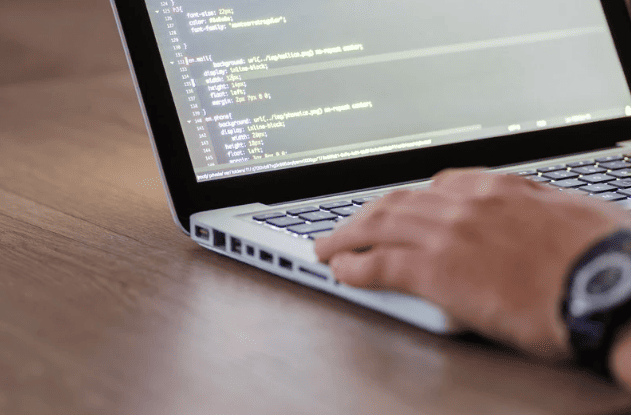


Learn about how Python trading with its efficient tools and libraries. Learn key concepts, strategies, and applications of Python trading to enhance your algorithmic trading performance.
Python trading refers to the use of the Python programming language to develop, test, and execute trading algorithms in financial markets. Python is widely embraced due to its simplicity, extensive libraries, and compatibility with financial data tools.

With the UAE, particularly Dubai and Abu Dhabi, becoming global centers for fintech innovation, Python-based algorithmic trading has seen growing interest among traders seeking advanced, automated trading solutions.
Python's syntax is easy to learn, making it accessible to both beginners and professionals. With rich libraries like Pandas andNumPy, Python simplifies data analysis and visualisation.
Python allows traders to automate strategies, analyse historical data, and execute trades with precision and speed, reducing human error and enhancing efficiency.

Python can handle various trading instruments, including stocks, forex, and cryptocurrencies, and is scalable for high-frequency trading operations.
Popular Python libraries such as:
Python has a massive global community, ensuring abundant resources, tutorials, and support for developers.

Python can retrieve and process large datasets from APIs, financial websites, and CSV files. For example, Using APIs like Alpha Vantage or Yahoo Finance to access historical and real-time data.
Python tools like Backtrader enable traders to test strategies against historical data to evaluate their performance. Key metricssuch as Sharpe Ratio, Drawdowns, and CAGR (Compound Annual Growth Rate).
Python can integrate with brokerage APIs like Interactive Brokers or Alpaca for live trading. This ensures trades are executed as per predefined conditions, such as price thresholds or technical indicators.
Python algorithms help traders implement risk controls, such as stop-loss orders, portfolio diversification, and dynamic rebalancing.

Assumes prices will revert to their average. Python algorithms identify overbought or oversold conditions using indicators like RSI or Bollinger Bands.
Focuses on trends, where Python identifies assets with strong upward or downward momentum based on moving averages or MACD.
Python can scan multiple exchanges for price discrepancies in real-time, executing buy-and-sell orders to capitalise on differences.
Python scripts execute numerous trades in fractions of a second, leveraging market inefficiencies.
Familiarise yourself with Python syntax, libraries, and IDEs like Jupyter Notebook or VS Code.
Gain knowledge of market structures, trading instruments, and technical analysis.
Use historical data to develop trading strategies and validate their effectiveness with backtesting tools.
Set up API connections with brokers to execute live trades. Popular APIs include Alpaca, Interactive Brokers, and Binance.
Unpredictable market movements can disrupt even the most sophisticated algorithms.
Over-reliance on historical data during backtesting can lead to poor real-world performance.
Developing Python trading systems requires programming skills and an understanding of algorithms.
Maintaining servers and data subscriptions can be costly for individual traders.

As part of our expansion into the UAE region, Algo Forest is proud to have been invited by the Abu Dhabi Investment Office (ADIO), a milestone that reflects our role as a growing force in the AI and fintech sectors.
We’re also excited to announce that we will be exhibiting at GITEX Global 2024, taking place at the Dubai World Trade Centre from October 14–18, 2024. Our team will be on-site to showcase the power of Python-driven algorithmic trading systems and demonstrate how automation is shaping the future of financial markets.
This event supports our broader mission to make algorithmic trading accessible to everyone in the UAE, whether you're a retail trader or an institutional investor.
Whether you're in Dubai, Abu Dhabi, or anywhere across the UAE, Python trading opens up a powerful new way to engage with the markets.
Visit our booth at GITEX Global 2024 to see our solutions in action or get started online today.
Learn more at AlgoForest.com and discover how our online algorithmic trading courses can help you turn code into capital.
Q1. What is Python trading?
Python trading uses the Python programming language to automate and execute trading strategies in financial markets.
Q2. Why is Python popular for trading?
Python's simplicity, extensive libraries, and flexibility make it ideal for algorithmic trading and data analysis.
Q3. Can beginners use Python for trading?
Yes, Python's user-friendly syntax and resources make it accessible for beginners, though a basic understanding of programming and markets is recommended.
Q4. What are the best Python libraries for trading?
Popular libraries include Pandas for data manipulation, NumPy for analysis, and Backtrader for strategy backtesting.
Q5. Are there risks involved in Python trading?
Yes, risks include market volatility, technical failures, and overfitting during backtesting.
Q6. What skills are required for Python trading?
Basic programming in Python, financial knowledge, and an understanding of trading platforms are essential.
Invited to landmark meeting with Abu Dhabi Investment Office, as its Forex Forest ecosystem empowers...
LEARN MORE >>外汇小课堂:外汇交易如何运作︖了解外汇交易的基本原理 外汇交易作为全球交易量最大、流动性最高的金融市场之一,每天的交易总额高达 6.6 兆美元,吸引了无数投资者参与。然而,对于许多外汇新手来说,外汇到底是怎么运作的?是否真的如传说中那般高风险、难以掌握? 本文将带您逐步了解外汇市场的基本架构和操作方式,帮您扫清学习过程中的疑惑。不论您是初学者还是稍有经验的交易者,都可以从本文中获得实用的信息与策略。 外汇交易的基本原理是什麼︖ 外汇交易的核心是「以一种货币兑换另一种货币」,也就是所谓的「货币对」。例如 EUR/USD(欧元/美元)代表购买一欧元所需的美元数。 每种货币都有其标准缩写,例如 EUR 是欧元、USD 是美元。通过查看这些货币对的价格,交易者可以判断当前汇率,并作出买入或卖出的决策。 外汇价格由市场供需决定,全天候波动,因此也为交易者提供了众多机会。 📌 实用小贴士:可通过连接至权威外汇网站查看实时汇率。...
LEARN MORE >>MetaTrader 4 (MT4) and MetaTrader 5 (MT5) are two of the most popular trading platforms...
LEARN MORE >>




